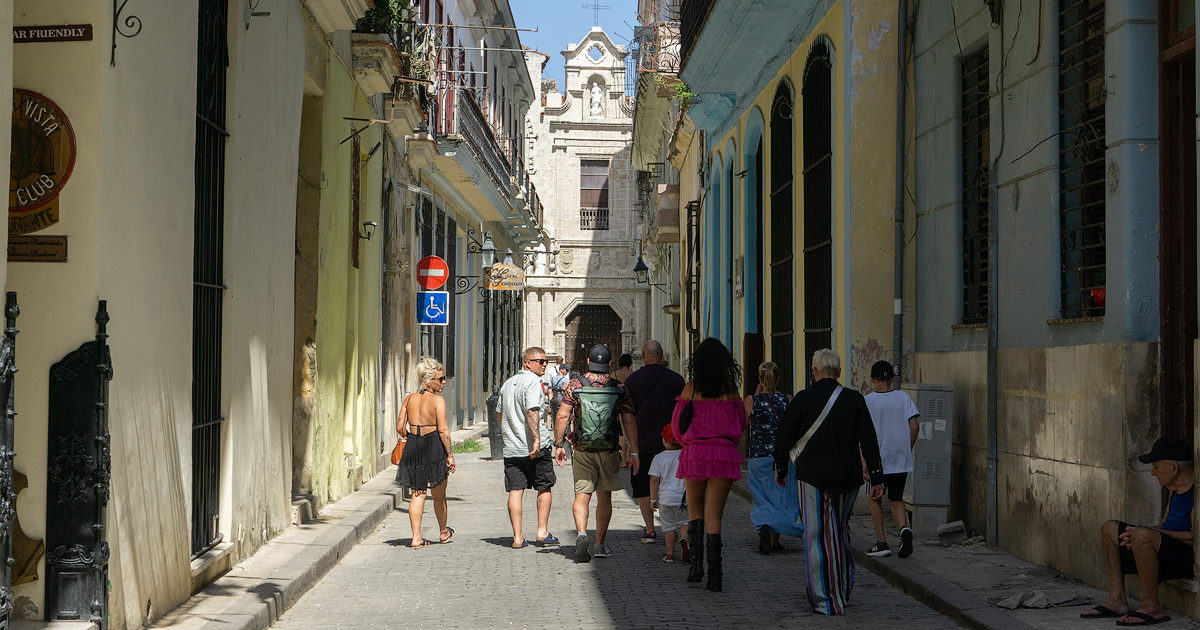Cuban economist Pedro Monreal has uncovered falsified data regarding tourist arrivals to Cuba in the first half of this year. The issue pertains to the 1.8 million visitors that the regime claims, through Cubadebate, arrived on the island from January to June this year.
Monreal explained on the social media platform X (formerly Twitter), "It is known that the cumulative number of visitors from January to May was 117,488, and it is impossible for the cumulative total from January to June to be 1.8 million." He added, "To accumulate 1.8 million visitors from January to June, 625,112 visitors would have had to arrive in June, but the maximum number of visitors received in a June in recent years was recorded in June 2018 (342,195)."
Cubadebate reported on Monday that the Minister of Economy Joaquín Alonso Vázquez informed the Economic Commission of the National Assembly of People’s Power that tourism had grown (presumably in the first half of this year) by 1.8% compared to the same period in 2023. The figures from the National Office of Statistics and Information (ONEI), echoed by the EFE agency, indicate that Cuba recorded 742,094 foreign visitors from January to June last year.
Monreal also detected irregularities, to put it mildly, in the ranking of the main tourist markets for Cuba. According to Cubadebate, these are Canada, Russia, Cuban residents abroad, and Germany. However, Monreal pointed out that from January to May, the top five sources were Canada, the Cuban community, the United States, Russia, and the United Kingdom. The official data for June has not been published.
"Perhaps in the January-June 2024 data, Russia could have surpassed the United States, but it is less likely that it would have overtaken the Cuban community. It does not seem feasible that Germany surpassed the United States, which is not even mentioned in the report," Monreal concluded.
The numbers do not add up, and the official narrative is showing its flaws. Cuba's Tourism Minister himself celebrated on April 26th for reaching one million visitors in the first quarter of the year and projected a goal of three million visitors for this year. This target is slightly lower than the goal set for 2023, which aimed for 3.5 million visitors, but the year ended with 1.9 million visitors from January to October, falling far behind the six million in the Dominican Republic and the four million in Cancun, Mexico.
Last year, the regime again invested more in the development of tourism in Cuba than in health and education infrastructure, despite government rhetoric suggesting otherwise. Economist Pedro Monreal previously highlighted this disparity by consulting official ONEI data.
"Statistics confirm the persistence of a highly distorted investment structure in Cuba, where one-third is concentrated in activities primarily related to tourism," Monreal stated at the time.
Uncovering the Truth Behind Cuban Tourism Data
In this section, we address some frequently asked questions about the discrepancies in Cuban tourism data as highlighted by economist Pedro Monreal.
What discrepancies did Pedro Monreal find in the Cuban tourism data?
Pedro Monreal found that the claimed 1.8 million visitors to Cuba from January to June 2024 was not feasible based on cumulative data from January to May, which was 117,488 visitors. This would require an impossibly high number of visitors in June.
Why is the official tourism data considered inaccurate?
The official tourism data is considered inaccurate because it does not align with previous years' data and the maximum number of visitors recorded in a single month, suggesting the numbers have been inflated.
Who are the main tourist markets for Cuba according to official data?
According to Cubadebate, the main tourist markets for Cuba are Canada, Russia, Cuban residents abroad, and Germany. However, Monreal's findings suggest discrepancies in this ranking.
How does Pedro Monreal's analysis impact the perception of Cuba's tourism statistics?
Pedro Monreal's analysis casts doubt on the accuracy of Cuba's tourism statistics, revealing potential manipulation of data to paint a more favorable picture of the tourism industry's performance.
